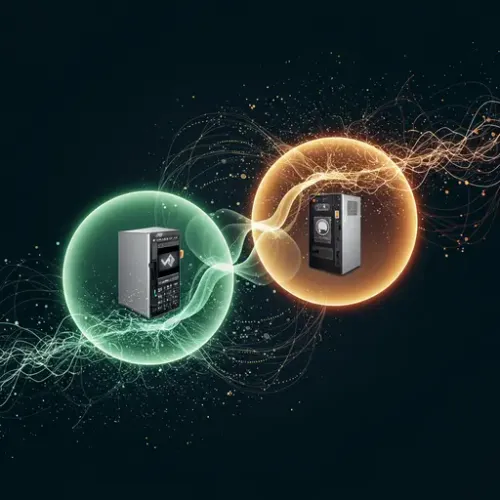Mastering Media Automation: Integrating Plex Media Server with Home Assistant

NGC 224
DIY Smart Home Creator
Introduction: Elevate Your Entertainment with Home Assistant & Plex
In the modern smart home, entertainment often sits at its heart. For many, that heart is a Plex Media Server, housing a meticulously curated library of movies, TV shows, and music. While Plex offers fantastic playback and organization, integrating it with Home Assistant unlocks a whole new realm of automation possibilities. Imagine your lights dimming automatically when a movie starts, your thermostat adjusting for optimal viewing comfort, or receiving notifications when new episodes of your favorite show are added to your library. This guide will walk you through integrating Plex with Home Assistant, providing setup steps, advanced automation tips, and best practices for a truly intelligent media experience.
Prerequisites for Integration
Before diving in, ensure you have the following:
- A running Home Assistant instance: Accessible via your local network.
- A running Plex Media Server: Fully configured and accessible from your Home Assistant instance. Ensure your Plex server is logged into a Plex account.
- Basic understanding of Home Assistant automations: Familiarity with triggers, conditions, and actions will be beneficial.
Basic Integration: Connecting Plex to Home Assistant
Integrating Plex is straightforward, thanks to Home Assistant's built-in integration.
1. Add the Plex Integration
- In Home Assistant, navigate to Settings > Devices & Services.
- Click + Add Integration.
- Search for Plex and select it.
- Home Assistant will attempt to discover your Plex Media Server on the local network. If found, confirm the server. If not, you may need to manually enter its IP address and port (default is
32400).
2. Authentication
The Plex integration typically requires authentication to access your server's data. You have two primary methods:
- Browser-based Login (Recommended): Home Assistant will open a browser window or prompt you to visit a URL to log into your Plex account. This is the simplest and most secure method.
- Plex Token: If browser-based login fails or you prefer a manual approach, you can obtain a Plex X-Plex-Token from your Plex web interface (usually by inspecting network requests while logged in). You'll then paste this token into the Home Assistant configuration prompt.
Once authenticated, Home Assistant will begin discovering entities from your Plex server. These typically include:
- Media Player Entities: One for each active Plex client (e.g.,
media_player.plex_chromecast,media_player.plex_web_client). These entities will reflect the playback state (playing, paused, idle), current media title, and more. - Sensor Entities: Sensors for new content added to your libraries (e.g.,
sensor.plex_recently_added_movie,sensor.plex_recently_added_tv_show), and potentially sensors for active streams or users.
Advanced Device Integration Tips
To maximize your Plex automations, understanding the nuances of the created entities is key.
- Targeting Specific Plex Players: Each Plex client (e.g., your living room TV, a mobile device, a web browser) that connects to your server will often create a distinct
media_playerentity. Use these specific entity IDs (e.g.,media_player.plex_nvidia_shield) in your automations to trigger actions only when media is playing on a particular device. - Leveraging Media Player States: The
stateattribute of a Plex media player entity is crucial. Common states include:playing: Media is actively being played.paused: Playback is paused.idle: No media is currently playing on the device.off: The player is disconnected or not active.
- Extracting Media Attributes: Beyond the state, Plex media player entities expose rich attributes like
media_title,media_series_title,media_album_name,media_duration,volume_level, andsource. These can be used in templates for more intelligent automations or notifications (e.g., "Now playing: {{ state_attr('media_player.plex_living_room', 'media_title') }}"). - Monitoring New Content: The
sensor.plex_recently_added_movieandsensor.plex_recently_added_tv_show(and similar for music) entities will update with the title of the latest added content. You can use a state change on these sensors to trigger notifications.
Best Practices for Powerful Automations
Here are some automation ideas to get you started, demonstrating the power of Plex integration:
1. Dynamic Lighting for Movie Nights
Automation: Dim lights when a movie starts on your main media player; restore lights when paused or stopped.
- Trigger: State change of
media_player.plex_living_room_tvfrompausedoridletoplaying, ANDstate_attr('media_player.plex_living_room_tv', 'media_content_type')ismovieorepisode. - Action (Start): Call
light.turn_onservice to set a scene or specific brightness/color for your living room lights. - Trigger (Stop/Pause): State change of
media_player.plex_living_room_tvfromplayingtopausedoridle. - Action (Stop/Pause): Call
light.turn_onservice to restore a previous scene or default brightness.
2. Pause Media When the Doorbell Rings
Automation: Automatically pause media playback on your main Plex player when your smart doorbell is pressed.
- Trigger: State change of
binary_sensor.front_doorbellfromofftoon. - Condition:
media_player.plex_living_room_tvstate isplaying. - Action: Call
media_player.media_pauseservice onmedia_player.plex_living_room_tv. You might also add an action to resume playback after a delay or another event.
3. New Content Notifications
Automation: Receive a notification on your phone when new TV show episodes or movies are added to your Plex library.
- Trigger: State change of
sensor.plex_recently_added_tv_showorsensor.plex_recently_added_movie. - Action: Call
notify.mobile_app_your_phone(or your preferred notification service) with a message like:New {{ trigger.entity_id.split('_')[-1].replace('_',' ') }} on Plex: {{ states(trigger.entity_id) }}!
4. Energy Savings: Turn Off TV/AVR After Playback
Automation: Power off your TV and AVR if no Plex activity is detected for a certain period.
- Trigger: State change of
media_player.plex_living_room_tvfromplayingorpausedtoidle. - Delay: Add a delay action (e.g., 5 minutes) to ensure no immediate re-engagement.
- Condition: After the delay, ensure
media_player.plex_living_room_tvis stillidle. - Action: Call
switch.turn_off(for smart plugs connected to TV/AVR) ormedia_player.turn_off(if your TV/AVR is directly integrated with Home Assistant via CEC, IR, or a dedicated integration like Samsung TV, LG webOS, Denon AVR, etc.).
5. User-Specific Experiences
If you have Plex Pass and multiple users, Plex can expose the active user playing media. This allows for truly personalized automations.
- Trigger: State change of
media_player.plex_living_room_tvtoplaying. - Condition: Template condition checking
{{ state_attr('media_player.plex_living_room_tv', 'user') == 'YourUserName' }}. - Action: Adjust lighting preferences, thermostat settings, or trigger unique scenes specifically for that user.
Troubleshooting Common Issues
- Plex Server Not Discovered: Ensure your Plex server and Home Assistant are on the same local network. Check firewall settings on your Plex server that might block network discovery. Try manually entering the IP address.
- Authentication Errors: Double-check your Plex account credentials. If using a token, ensure it's correct and hasn't expired (though tokens are generally long-lived).
- Entities Not Updating: The Plex integration uses WebSockets for real-time updates. If your Home Assistant instance cannot establish a WebSocket connection to Plex (e.g., due to network configuration, Docker networking, or firewall), updates may be delayed or fail. Restarting both Plex and Home Assistant can often resolve this.
- Missing Media Player Entities: Ensure Plex clients are active and connected to your server. Home Assistant typically only creates entities for clients that have recently played media.
- Remote Access Issues: While Home Assistant uses local communication, ensure your Plex server's remote access is configured correctly if you plan to use Plex functionality outside your home network (though this is more for Plex's own features, not the HA integration).
Reliability and Maintenance
To keep your integrated Plex and Home Assistant system running smoothly:
- Keep Software Updated: Regularly update both Home Assistant and your Plex Media Server to benefit from bug fixes, performance improvements, and new features.
- Monitor Performance: If you notice delays in automations or entity updates, check the resource usage of your Plex server and Home Assistant. Ensure your network is stable.
- Backup Your Configuration: Regularly back up your Home Assistant configuration, especially before major updates or changes. This ensures you can easily recover if something goes wrong.
- Review Automations: Periodically review your Plex-related automations. As your needs or media consumption habits change, you might find ways to optimize or expand your existing automations.
Conclusion
Integrating Plex Media Server with Home Assistant transforms your entertainment system from a mere media library into an intelligent, reactive hub that enhances your living space. By leveraging the rich data provided by Plex entities and combining them with Home Assistant's powerful automation engine, you can create a truly immersive and personalized smart home experience. Dive in, experiment with triggers and conditions, and unlock the full potential of your media and home automation.

NGC 224
Author bio: DIY Smart Home Creator
